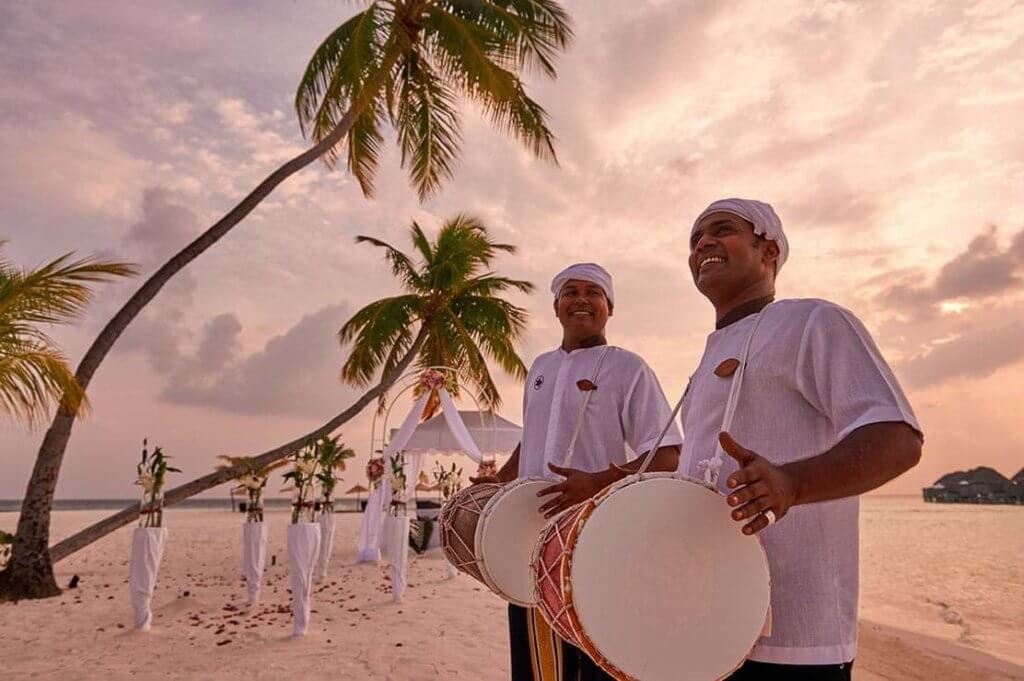Wherever you go in the world, you’ll see that music brings people together and creates a true sense of identity among communities.
Experiencing local musical traditions paints a picture of the place, creating an emotional connection while allowing you to expand your cultural horizons and understanding.
Make the most of your holiday by experiencing the unique traditions of your destination
The islands of the Indian Ocean have a rich musical heritage that’s just waiting to be explored! Take a deeper look at how the island music has evolved into what it is today, and find out how you can experience it for yourself…
-
Discover Sega in Mauritius
What is Sega?
Sometimes referred to as the ‘blues of the Indian Ocean’, Sega is integral to Mauritian folklore and was originally sung by slave communities on the island. The music is full of both sorrow and joy, evoking the misery of existence as a slave as well as the joy and happiness found within communities.
Dancers wear long, flowing skirts to twirl around
Sega is haunting and enchanting, and as the national music of Mauritius it’s an enriching experience for anyone visiting this extraordinary island.
What instruments do Sega musicians use?
Traditional instruments include:
- The ravanne – a piece of goat skin stretched over a wooden hoop
- The maravanne – a wooden box containing sand or seeds that’s to be shaken
- The triangle – a piece of metal in a triangular shape to be tapped with an iron rod
The ravanne is essential for Sega!
Photo credit: Giorgio Minguzzi
How about the dancing?
The number one rule? Let yourself go! It’s hard not to get involved when the Sega starts – don’t even try to resist swaying your hips to the rhythm.
The beautiful costumes worn in Sega
Traditionally danced between couples, Sega involves swaying hips, lateral steps, arm raises and crouches. The women famously wear full length skirts that they can twirl around, usually white or in vibrant colours.
-
Experience Boduberu in the Maldives
What is Boduberu?
The literal translation of Boduberu is ‘big drums’. The drummers perform using drums built from coconut wood and the beat is integral to this dance music.
Guests can experience Boduberu for themselves at Constance Moofushi Maldives
The beat starts slow and steady, building to a frenetic crescendo before a sudden end.
Who plays it?
The Maldives are made up of many islands, and each one has its own Boduberu band! They perform at events such as festivals or religious celebrations as well as at competitions.
Constance Moofushi Maldives has its own Boduberu team!
Bands are large – they’re usually made up of 20 people! Crowds watching the music will also join in, first clapping and shouting before joining the band in a dance.
-
See Moutya and Maloya for yourself in the Seychelles
What is Moutya?
Similar in style to Sega, Moutya is based around a drumbeat produced from drums made from local materials and is traditionally performed around a campfire.
The campfire really adds to the atmosphere!
Photo credit: Gerard Larose, Seychelles Diary
The tempo of the drumming gradually increases as the dancers’ movements become faster and more elaborate. The dance that accompanies Moutya allows dancers to move more freely across the floor – they often wear brightly coloured dresses highly decorated with flowers to create a real visual spectacle.
Costumes are always beautifully bright!
Credit: The Lovely Planet
How does Maloya differ?
Maloya uses similar instruments to Moutya but the rhythm is slower and the lyrics often follow a call-and-response structure. This means that the style has leant itself to songs of a politically rebellious nature – Maloya was actually banned until the 1960s because it was so heavily linked to Creole separatism!
Why seek out a performance during your stay?
The cultural melting point of the Seychelles is fascinating, and the music is so rooted in the island nation’s history. If you’re into culturally immersive holidays, music is one of the best ways to understand the heritage of these beautiful islands!
The unique beauty of the Seychelles is matched by its unique musical sounds
-
The Valiha of Madagascar
Madagascar is truly a culturally diverse nation – it’s thought that Madagascans represent eighteen different ethnic origins! This means that the musical heritage of this large island just off the African coast is equally as diverse.
Tsarabanjina is a tiny private island just off the coast of Madagascar
What’s the Valiha?
The national instrument of Madagascar, the Valiha is a chordophone crafted from bamboo with strings spanning the length of the wood.
Take a look at the intricately carved Valiha!
Photo credit: Grinnell College
It’s actually thought that the Valiha originated from Indonesia. Today, many different people across the country play it, including in traditional Tromba ceremonies where ritual music is used to summon spirits.
The Instrument has a beautiful sound
The Tromba ceremony is a tradition of the Sakalava people that is often more than a religious event, becoming a form of community celebration for everyone to join in.
Indian Ocean islands are filled with music… Come and see for yourself! During a stay at Constance Hotels & Resorts you’ll get many chances to experience local music. The question is, which island will you visit first?
The laid back atmosphere of Mauritius lets musical creativity flow, as Tom Felton discovered during his stay at Constance Belle Mare Plage!
—
